The cost of a motherboard depends upon a lot of factors. Just as is the case with all commercial products, there is a vast range of models for motherboards. Therefore, the question of how much a motherboard is depends upon what category of motherboards you are looking at.
Essentially, a motherboard can cost anywhere between $50-$1500. But the average cost of a motherboard in the budget range is about $70-$130. Mid-range motherboards can range anywhere from $150-$180. Popular high-end motherboards have an average cost of about $200-$250. Motherboards more expensive than $250 are for extreme builders and enthusiasts.
Again, some motherboards are basic and only suitable for budget-oriented PC builds. Basic motherboards offer the bare minimum specs. The more expensive a motherboard gets, the more additional features it provides.
In the following text, I will talk in detail about how much is the average cost of a motherboard in various categories but also talk about factors that affect the price of a motherboard.
TABLE OF CONTENTS
So How Much is a Motherboard?
To determine the exact price of a motherboard, I will categorize them based on the chipsets. Since chipsets essentially define the prowess of a motherboard, the price is almost directly related to what chipset the motherboard offers.
Average Price of Budget Motherboards – Intel H510 and H610 Chipset and AMD A520 Chipsets
H510 and H610 are both low-end chipsets for Intel motherboards. Motherboards featuring these chipsets feature minimum specs such as weaker and fewer VRMs, fewer PCIe lanes, fewer PCIe slots, and slower USB ports.
The H510 chipset is based on the Intel LGA 1200 socket for Intel 10th and 11th Gen CPUs.
The H610 chipset is newer and is based on the Intel LGA1700 socket for Intel 12th gen and newer CPUs.
The A520, on the other hand, is a budget chipset for AMD builds featuring the AM4 socket.
As of writing this article, the following are the prices of some of the Intel H and AMD A series motherboards.
Intel H510 Motherboard Prices
| Motherboard | Socket | Price | Form Factor |
| MSI H510M-A PRO | LGA1200 | $79 | mATX |
| Asus PRIME H510M-E | LGA1200 | $95 | mATX |
| MSI H510I PRO WIFI | LGA1200 | $128 | Mini ITX |
Motherboards with Intel H510 chipset are among the cheapest featuring the LGA1200 socket.
Depending on your desired features, a motherboard featuring H510 costs between $79 and $128.
The MSI H510M-A Pro is the cheapest as it offers fewer features, such as a lower number of PCIe expansion slots and fewer video output ports on the back panel.
The MSI H510I Pro Wi-Fi is among the more expensive models since it offers a compact mini ITX form factor and built-in Wi-Fi.
Intel H610 Motherboard Prices
| Motherboard | Socket | Price | Form Factor |
| ASRock H610M-HDV/M.2 | LGA1700 | $100 | mATX |
| Asus PRIME H610M-A D4-CSM | LGA1700 | $110 | mATX |
The H610 is the budget motherboard chipset featuring the LGA1700 socket for the Intel 12th Gen CPUs.
The average cost of these motherboards is about $100.
AMD A520 Motherboard Prices
| Motherboard | Socket | Price | Form Factor |
| MSI A520M-A PRO | AM4 | $63 | mATX |
| ASRock A520M Pro4 | AM4 | $85 | mATX |
| MSI MAG A520M VECTOR WIFI | AM4 | $100 | mATX |
| ASRock A520M-ITX/ac | AM4 | $165 | Mini ITX |
AMD A520 is currently the cheapest motherboard chipset with the AM4 socket suitable for AMD Ryzen CPUs from 1000 to 5000 series.
AMD A520 motherboards are generally cheaper than the Intel H510 and H610 chipsets primarily because they conform to the older PCIe 3.0 standard and offer slower USB ports. The Intel H510 and H610 have slots that conform to PCIe 4.0 and offer faster USB ports.
The average cost of an A520 motherboard is about $85-90 dollar.
The cheapest A520 motherboard is the MSI A520M-A PRO, with a current market price of about $63. At the same time, the ASRock A520M-ITX/ac is an outlier with an expensive price tag of $165 primarily because it offers a mini-ITX form factor and built-in Wi-Fi. I wouldn’t recommend this motherboard, though, for this price.
TL;DR, the average price of a budget motherboard is about $85.
Also Read: How Much Should I Spend on a Motherboard?
Average Price of Mid-Range Motherboards – Intel B560 and B660 Chipset and AMD B550 Chipsets
Intel B560, B660, and AMD B550 are mid-range chipsets often preferred by design and editors on a budget and by gamers.
They offer features such as a newer PCIe version, more PCIe lanes, more unique and higher number of USB and M.2 ports, better VRMs, more expansion slots, support for dual graphics cards, etc.
Intel B560 Motherboard Prices
| Motherboard | Socket | Price | Form Factor |
| MSI B560M-A PRO | LGA1200 | $90 | mATX |
| Asus PRIME B560M-A | LGA1200 | $110 | mATX |
| MSI MAG B560 TORPEDO | LGA1200 | $150 | ATX |
| Asus ROG STRIX B560-A GAMING WIFI | LGA1200 | $180 | ATX |
| MSI MPG B560I GAMING EDGE WIFI | LGA1200 | $240 | Mini ITX |
The Intel B550 has the broadest range of motherboards ranging from a cheap $90 motherboard to the astoundingly expensive MSI MPG B560I Gaming Edge Wi-Fi worth $240, the reason, of course, being the compact Mini ITX form factor.
But generally, the most common price range for B560 motherboards is about $150. Of course, depending on the bells and whistles you want, the more expensive the motherboard gets, even with the mid-range chipset.
Intel B660 Motherboard Prices
| Motherboard | Socket | Price | Form Factor |
| Asus PRIME B660M-A D4 | LGA1700 | $140 | mATX |
| MSI MAG B660 TOMAHAWK WIFI DDR4 | LGA1700 | $190 | ATX |
| Asus ROG STRIX B660-I GAMING WIFI | LGA1700 | $220 | Mini ITX |
| Asus ROG STRIX B660-A GAMING WIFI D4 | LGA1700 | $240 | ATX |
The primary difference between the B560 and B660 is that the latter features the LGA1700 socket intended for the Intel 12th-gen sockets.
Naturally, the B660 motherboards are more expensive on average than the B560 motherboards.
The average price of an Intel B660 motherboard is about $190.
AMD B550 Motherboard Prices
| Motherboard | Socket | Price | Form Factor |
| ASRock B550M-HDV | AM4 | $80 | mATX |
| Gigabyte B550M DS3H | AM4 | $96 | mATX |
| ASRock B550M/ac | AM4 | $130 | mATX |
| MSI MPG B550 GAMING PLUS | AM4 | $160 | ATX |
| Asus ROG STRIX B550-F GAMING (WI-FI) | AM4 | $190 | ATX |
| Asus ROG STRIX B550-I GAMING | AM4 | $218 | Mini-ITX |
| Gigabyte B550M AORUS PRO | AM4 | $279 | mATX |
| Asus ROG STRIX B550-E GAMING | AM4 | $360 | Mini-ITX |
AMD B550 is a very popular chipset for gamers and enthusiasts. This chipset currently has one of the widest varieties of motherboards ranging from cheap $80 motherboards to high-end $360 ASUS ROG Strix B550-E Gaming motherboards.
While there are budget and expensive outliers here, the most common price bracket for AMD B550 motherboards is between $130-$180, with the most popular B550 motherboards in the $180 range.
TL;DR, the average price of a mid-range motherboard is about $150.
Average Price of High-End Motherboards – Intel Z590 and Z690 Chipset and AMD X570 Chipsets
The Intel Z590 for the 10th and 11th gen CPUs, Intel Z660 for Intel 12th CPUs, and AMD X570 for Ryzen 1000-5000 series CPUs are high-end chipsets on top-of-the-line motherboards.
They offer the best features, such as the highest number of PCIe lanes, the newest connectivity standards, the best VRM and phase power design, and the most attractive looks.
Intel Z560 Motherboard Prices
| Motherboard | Socket | Price | Form Factor |
| ASRock Z590 Pro4 | LGA1200 | $140 | ATX |
| Gigabyte Z590 UD AC | LGA1200 | $190 | ATX |
| Asus TUF Gaming Z590-PLUS WIFI | LGA1200 | $233 | ATX |
| Gigabyte Z590 AORUS MASTER | LGA1200 | $336 | ATX |
| Asus ROG Maximus XIII Apex | LGA1200 | $600 | ATX |
| MSI MEG Z590 GODLIKE | LGA1200 | $850 | E-ATX |
The cheapest Z590 motherboard is almost as expensive as an average Intel B560 motherboard. At the same time, the most expensive Z590 motherboards are a work of art and are not intended for an average user.
Despite the large price range, the average price of the most popular Z590 motherboards is between $200 – $240.
Intel Z660 Motherboard Prices
| Motherboard | Socket | Price | Form Factor |
| Asus PRIME Z690-P | LGA1700 | $180 | ATX |
| MSI PRO Z690-A DDR4 | LGA1700 | $220 | ATX |
| Gigabyte Z690 AORUS ELITE AX DDR4 | LGA1700 | $270 | ATX |
| Asus ROG STRIX Z690-A GAMING WIFI D4 | LGA1700 | $360 | ATX |
| Gigabyte Z690 AORUS XTREME | LGA1700 | $900 | ATX |
The Z660 motherboards featuring the LGA1700 socket with PCIe 5.0 and DDR5 support are more expensive than their Z590 counterpart. The average price of a Z590 motherboard is in the range of $300. However, you can find popular options in the $240 range.
AMD X570 Motherboard Prices
| Motherboard | Socket | Price | Form Factor |
| Asus PRIME X570-P | AM4 | $145 | ATX |
| Asus TUF GAMING X570-PLUS (WI-FI) | AM4 | $195 | ATX |
| Asus ROG Strix X570-I Gaming | AM4 | $255 | Mini-ITX |
| Asus ROG Crosshair VIII Hero (WI-FI) | AM4 | $395 | ATX |
| Asus ROG Crosshair VIII Extreme | AM4 | $800 | E-ATX |
Like the Intel high-end motherboards, the X series can be found in a wide price range. The cheapest is about $150, whereas the most expensive can reach $800.
Like the Intel Z series, the most popular X570 motherboards are within the $200-$240 range.
TL;DR, the average price of a high-end motherboard is easily in the $300 and beyond range. However, since the price range is so vast, the average cost of the entire data set can be a bit misleading. The popular models are in the $200-$250 range.
Also Read: How Difficult is it to Build a PC?
Factors That Affect the Price of a Motherboard
To determine a motherboard’s size, you must look at its features. There are a lot of factors that determine the price of the motherboard.
This includes:
- The Chipset
- PCIe Lanes
- PCIe Version
- CPU Socket
- Amount of Expansion Slots
- VRMs
- Overclocking Support
- Form Factor
- USB Ports, their Version, and Headers
- Looks and Design
Also Read: What Makes a Motherboard Good?
1. The Chipset
The chipset is the heart of a motherboard. It defines your PC build. The chipset defines the CPU socket your PC will support, the number of PCIe lanes and their version, the number of expansion slots, etc.
As mentioned, Intel and AMD have several series of chipsets ranging from budget to high-end.
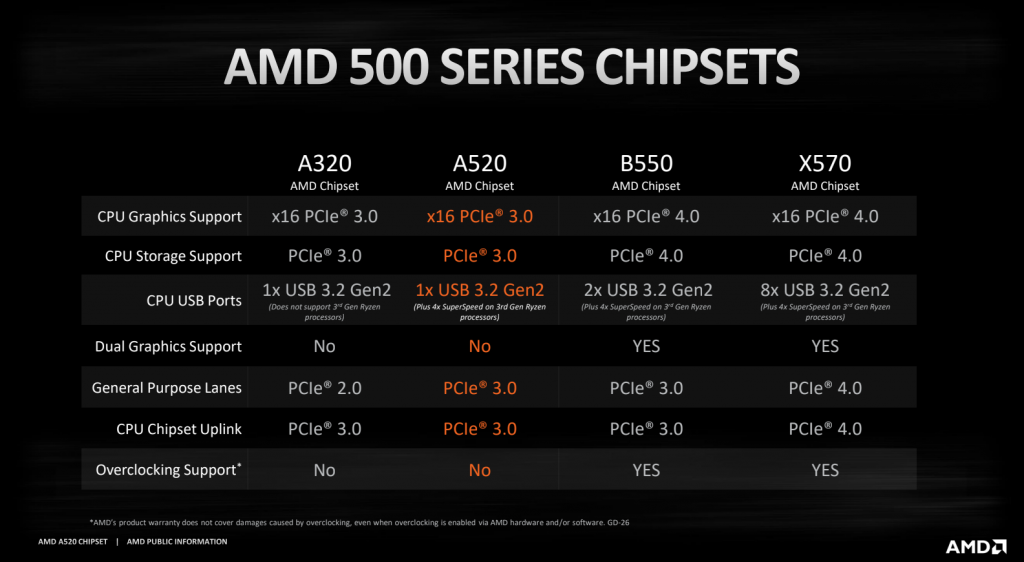
2. PCIe Lanes
The amount of PCIe lanes the motherboard offers directly relates to how expensive it would be. The amount of PCIe lanes a motherboard can offer depends upon its chipset.
High-end chipsets such as the Z690 can offer 28 PCIe lanes, whereas budget chipsets such as the Intel H510 offer 4.
| Manufacturer | Chipset | PCIe Lanes | Category |
|---|---|---|---|
| Intel | Z690 | 28 – 12 x v4.0 – 16 x v3.0 | High Performance |
| H670 | 24 – 12 x v4.0 – 12 x v3.0 | High Performance (Minus overclocking Support) |
|
| B660 | 14 – 6 x v4.0 – 8 x v3.0 | Mid Range | |
| H610 | 12 – 12 x v3.0 | Budget | |
| Z590 | 24 | High Performance | |
| Z490 | 24 | High Performance | |
| B460 | 16 | Mid Range / Mainstream |
|
| B560 | 12 | Mid Range / Mainstream |
|
| X299 | 24 | Workstation | |
| H510 | 4 | Budget | |
| AMD | X570 | 16 | High Performance |
| B550 | 10 | Mid Range | |
| A520 | 6 | Budget | |
| TRX40 | 16 | Workstation |
Also Read: How to Check How Many PCIe Lanes I Have?
3. PCIe version
The PCIe version of the lanes and the slots also affect the price of the motherboard.
Motherboards featuring the newer PCIe 4.0 and 5.0 are more expensive than the older motherboards.
A newer PCIe version can drastically improve the performance of the connected devices. With every new PCIe version, the per-lane transfer rate of the slots doubles.
This means installing newer and more demanding devices in the PCIe slots.
| Version | x1 (GB/s) | x2 (GB/s) | x4 (GB/s) | x8 (GB/s) | x16 (GB/s) |
|---|---|---|---|---|---|
| 1.0 | 0.250 | 0.500 | 1.000 | 2.000 | 4.000 |
| 2.0 | 0.500 | 1.000 | 2.000 | 4.000 | 8.000 |
| 3.0 | 0.985 | 1.969 | 3.938 | 7.877 | 15.754 |
| 4.0 | 1.969 | 3.938 | 7.877 | 15.754 | 31.508 |
| 5.0 | 3.938 | 7.877 | 15.754 | 31.508 | 63.015 |
| 6.0 | 7.877 | 15.754 | 31.508 | 63.015 | 126.031 |
Also Read: What are PCIe Lanes?
4. CPU Socket
Motherboards featuring CPU sockets for newer-generation CPUs are often expensive.
For instance, the motherboards featuring the LGA1700 socket for 12th gen Intel CPUs are generally more expensive than those featuring the LGA1200 socket for the 10th and 11th gen CPUs.
Also Read: How to Check What CPU is Compatible With My Motherboard?
5. Amount of Expansion Slots
The amount of PCIe and M.2 slots your motherboard has affects its price. It should be noted that M.2 slots for NVMe SSDs also utilize PCIe lanes.
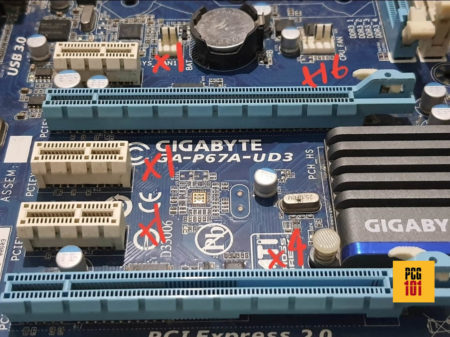
6. VRMs – Phase Power Design
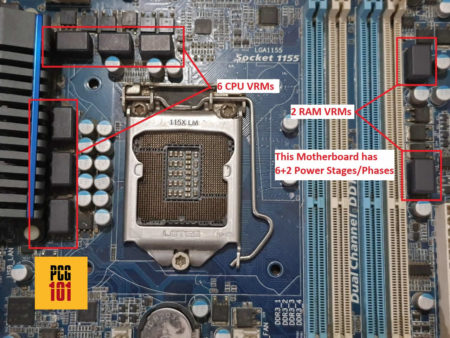
Also, Read in Detail: What is Motherboard Power Phases and VRMs?
VRMs or Voltage Regulator Modules may look trivial initially, but they are among the most critical factors for determining the motherboard’s quality.
The quality, size, and amount of VRMs on your motherboard significantly influence its price. VRMs have the purpose of delivering steady power to the CPU and the RAM.
The better the quality, the more stable and clean power the CPU will get delivered.
VRMs are an essential component for overclockers since the more and higher quality VRMs your motherboard has, the more you will be able to overclock while maintaining stable operations.
When we talk about how a $50 and a $300 motherboard differ, the VRMs play a massive role.
7. Overclocking support
Not all motherboards are capable of overclocking. Only the Z series motherboards offer overclocking support with Intel, whereas the B and X motherboards offer overclocking support with AMD.
Again, the degree to which you can overclock your CPU while maintaining good overall stability is determined by the quality and the amount of VRMs your motherboard has.
8. Form Factor
These three typical form factors for motherboards:
- Full ATX – 12 x 9.6 inches (305 x 244 mm)
- Micro ATX – 9.6 x 9.6 inches (244 x 244 mm)
- Mini ITX – 6.7 x 6.7 inches (170 x 170 mm)
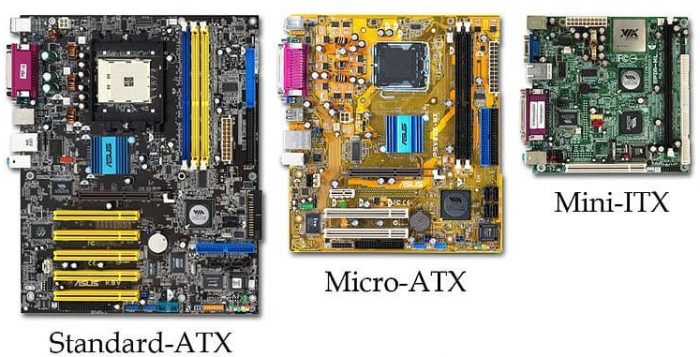
Mini ITX motherboards, being the smallest, are rare and generally intended for specialized portable builds. They are often quite expensive compared to ATX and Micro ATX if you compare the same specs.
ATX, aka Full or Standard ATX, is generally the golden standard for gamers, enthusiasts, and professionals. They offer the most expandability.
Micro ATX motherboards are intended for budget PCs.
9. USB and Video Ports, their Version, and Headers
The number of USB ports your motherboard has and their version also significantly impact the price.
A good motherboard offers not only the newer USB 3.2 Gen 2×2 ports with a 20 Gbps transfer rate but will also provide USB headers so that you can connect the front USB ports of your PC case.
A Thunderbolt port or a header can also add further cost to the motherboard.
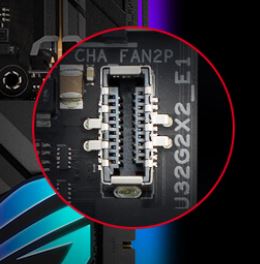
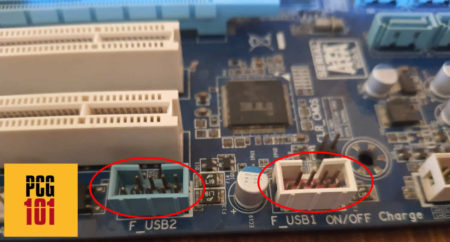
The USB nomenclature and the version are quite difficult to understand. The following table clarifies this:
| USB Version | Release Year | Transfer Speed (Gbps) | Interface Options | Remarks | Transfer Mode |
|---|---|---|---|---|---|
| USB 2.0 | 2000 | 0.48 | Type A | – Introduced 0.48 Gbps Speeds | High Speed |
| USB 3.0 | 2008 | 5.0 | Type A | – Introduced 5.0 Gbps speeds | SuperSpeed |
| USB 3.1 Gen 1 | 2013 | 5.0 | Type A Type C | – Same as USB 3.0 | SuperSpeed |
| USB 3.1 Gen 2 | 2013 | 10.0 | Type A Type C | – Introduced 10.0 Gbps speeds | SuperSpeed+ |
| USB 3.2 Gen 1×1 | 2017 | 5.0 | Type A Type C | – Same as USB 3.0 | SuperSpeed |
| USB 3.2 Gen 1×2 | 2017 | 10.0 | Type C | – Dual Channel | SuperSpeed |
| USB 3.2 Gen 2×1 | 2017 | 10.0 | Type A Type C | -Same as USB 3.1 Gen 2 | SuperSpeed+ |
| USB 3.2 Gen 2×2 | 2017 | 20.0 | Type C | – Dual Channel – Introduced 20.0 Gbps speeds | SuperSpeed++ |
Also Read: What are USB Headers?
In addition, the video output ports and their version also determine the quality and, in turn, the price of the motherboard.
10. Looks and Design
And finally, the looks of a motherboard, the amount of customization it offers in the shape of RGB headers, fan headers, and AIO cooler support affect the price of a motherboard.
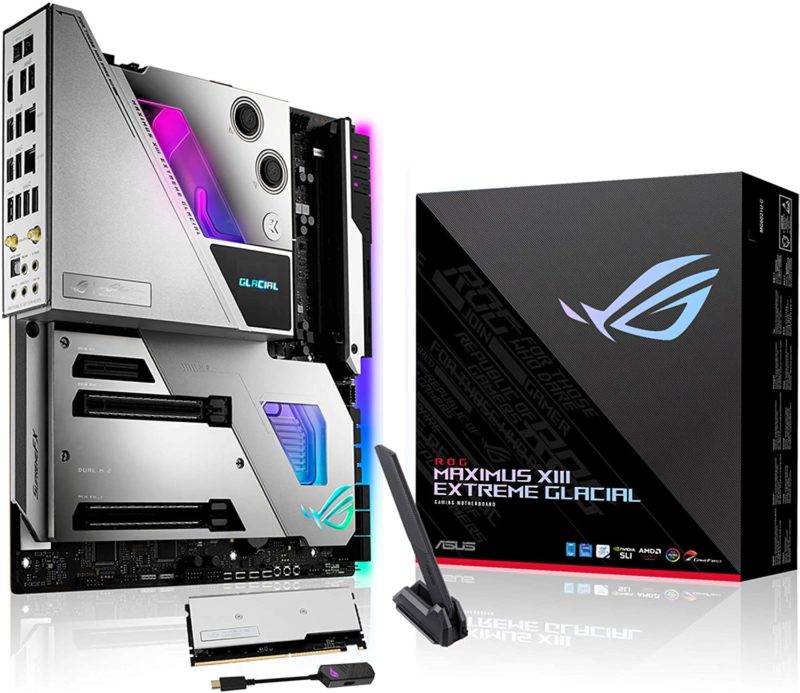
Final Words
So how much is a motherboard? Well, TL:DR:
- Popular budget motherboards have an average cost of $85
- Popular mid-range motherboards have an average price of $150
- Popular high-end motherboards have an average price of $200-$250.
However, depending on the features you are looking for, you can find motherboards as cheap as $50 and as expensive as $1500.
FREQUENTLY ASKED QUESTIONS
1. What are the factors that affect the cost of a motherboard?
The cost of a motherboard can be affected by several factors such as the brand, model, chipset, form factor, features, and warranty. Motherboards from popular brands with high-end chipsets, advanced features, and longer warranty periods are generally more expensive than those from lesser-known brands with basic features.
2. Are there any specific features that make a motherboard more expensive than others?
Yes, there are several features that can make a motherboard more expensive than others. Some of these features include a high-end chipset, multiple expansion slots, support for overclocking, built-in Wi-Fi or Bluetooth, advanced audio or video capabilities, and a larger form factor. The more advanced and unique features a motherboard has, the higher its price is likely to be.
3. Is it better to buy a branded motherboard or can I go for a generic one?
It is generally recommended to buy a branded motherboard as they are more reliable and offer better customer support and warranty. Branded motherboards are manufactured by companies that have a good reputation in the market, so you can be assured of their quality and performance.
However, if you are on a tight budget and don’t require advanced features, you can consider buying a generic motherboard, but you should do your research to ensure that it is of good quality.
4. Can I upgrade my existing motherboard or should I replace it entirely?
It depends on your specific requirements and the compatibility of your existing motherboard with the newer components. If you want to upgrade your computer’s performance, you can try upgrading the RAM, storage, or graphics card first.
If you find that your motherboard is not compatible with the newer components or is limiting their performance, you may need to replace it entirely. It is recommended to consult with a professional before making any major upgrades to your computer.
